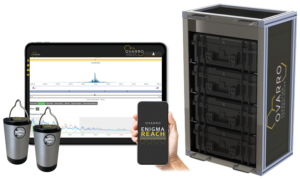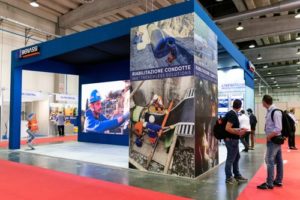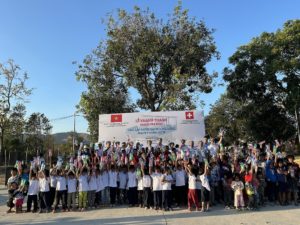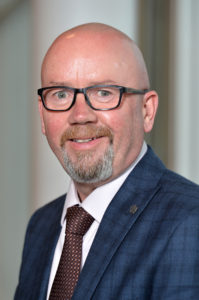Case Story: Now We Can Shower with Rain Water
Create potable water easily and economically with new water treatment technology that also combines heat recovery.
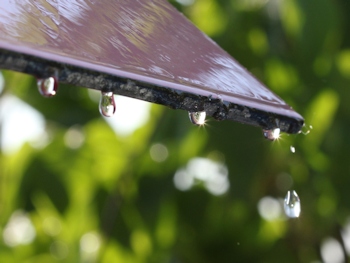
The idea of a self-sustaining water supply is not novel. In most cases, you will find these self-sustaining water supply systems in rural, undeveloped regions, which are catered groundwater. Unfortunately, every home owner does not have the same opportunity to take advantage of such sources. Rainwater however, is available almost everywhere, but to date, it has hardly been used for any other purposes except for flushing toilets and watering the garden.
According to the European drinking water regulations, the water used for body hygiene, such as showering and washing hands, must be of potable water quality.
In order to fulfil the requirements of the EC Directive "water for human consumption," Intewa GmbH has now employed a special new concept, by creating a prototype system for the single family dwelling, within the framework of the EU project "Eco Innovation" water for reuse within the home.
Since in this project sufficient rainwater is not available for all consumers, the new system utilises shower water (called grey water) after it has been collected and treated and then used again for toilet flushing. At the same time, the heat apparent in the shower water is extracted from the grey water and utilised in pre-heating the shower water again.
The main advantages of Aqualoop Technology:
- saving of potable water resources
- saving of additional infrastructure like canals and supply systems
- cost saving for both water provider and consumer
- more freedom from dependence on the water provider
- soft, calcium-free water
- no anthropogenic micro pollutants in the water
- easy retrofitting by using the existing house water pipework
Retrofitting the Aqualoop Rainwater system
The rainwater is collected from 120 m² large roof surface and collected in a 10 m³ cistern.
The self-cleaning PURAIN rainwater filter (with built-in skimmer overflow, backflow valve and hydraulic jump principle) cleanses the water using a 0.8 mm stainless steel wedge wire filter. The rainwater is micro-filtered (sterilised) by the Aqualoop membrane station situated inside the tank using membrane fibres with a pore size of 0.2 µm, and then fed into a 350 litre clear water storage tank situated in the basement. In order to exclude - possible - potential microbial contamination later in the basement tank, the water is additionally disinfected prior to distribution within the dwelling with UV treatment.
This purified water is pumped using the speed-controlled water supply unit Rainmaster Favorit SC, into the existing water line and provided to all the consumers in the house. The municipal water supply system is connected only to the DVGW certified Rainmaster Favorit and to the drinking water supply in the kitchen. The water quality produced by the Aqualoop system is checked at regular intervals. If the results of ongoing testing prove a consistently high level of treatment then the drinking water supply in the kitchen could also be supplied with rainwater from the Aqualoop system in the future, too.
Since the existing house water supply pipes can be fully utilised, this concept allows easy retrofitting of rainwater systems for the first time.
Overview of Aqualoop rainwater system
- Collecting rainwater from 120 m² roof area
- PURAIN 100 rainwater filter incl. skimmer overflow and backflow valve, with inlet calming
- Storage in a 10 m³ external tank
- Aqualoop Membrane station, combining ultra-filtration and micro-filtration membranes situated in the tank
- 350 litre clean water tank situated in basement for sterilised water
- Pumping from clean water tank throughout the house with RAINMASTER Favorit 20-SC
- 20 Watt UV sterilisation for additional safety
- increase of pressure in existing supply system
- Connection to shower, washing machine, wash basin etc.
- Additional water supply via RAINMASTER with municipal water, should treated water not be available
- a separate municipal water supply for kitchen tap
Water quality of rainwater
The quality of rain water and the cleaning performance of the system have been investigated through the testing of the entire system at different points. The analysis results show that the bacterial load of the raw water from the rainwater tank is already very low. Neither the bacterium E. Coli, which is an important indication of contamination with faecal matter, nor the pathogen Pseudomonas Aeruginosa, were found in the tested samples.
The treatment potential of the Aqualoop membrane can be proven by the analysis of treated water after microfiltration, in which no coliform bacteria and bacterial colonies were detected. As per the result of analysis, the additional sterilisation by UV lamp is not actually necessary but it provides additional security. The limits of the drinking water regulations for "water for human consumption" are met for all examined parameters (See Table 1). Only the pH value was exceeded in the first sample. The cause of this raised pH level was found to be due to the cementitious construction of the tank.
Aqualoop Grey water recycling
In this demonstration project, the rain water alone is not enough to cover the entire water requirements for a family of four people. Therefore, a further 30 m³/year or so of water can be saved by the additional recycling of household grey water, obtained from shower and wash basin, and thereby the total household water requirement (100m³/year) can be covered. The only lightly contaminated grey water, obtained from personal hygiene use, is purified in the Aqualoop grey water recycling system and then used for toilet flushing within the home.
In contrast to the rainwater tank, the grey water system utilises two very small 350 litre storage tanks), which provide the approximate daily water requirement for toilet flushing. First of all, coarse contaminants, such as hair are separated by the Aqualoop pre-filter. After this, the water is biologically treated in the aerated, fluidized tank by microorganisms that proliferate on the provided support media. The microfiltration stage draws water through the pores of the hollow fibre membrane, positioned in the Aqualoop membrane station, removing all bacteria and viruses apparent in the grey water. The biologically treated and sterilized water then meets at minimum the EU bathing water quality guidelines. The rainwater unit RAINMASTER Eco supplies the treated water to toilets from the grey water systems clear water tank.
Extracting heat from grey water
With the heat exchanger, which is installed in the Aqualoop Grey water system, up to 12 kWh/m³ energy was extracted during the demo system testing, and used in pre-heating the cold rainwater.
Overview of Aqualoop Grey water system
- Aerated fluid bed bioreactor in 350 litre tank
- Aqualoop pre-filter incl. skimmer overflow, siphon overflow and backflow valve
- Aqualoop membrane station with ultra/micro filtration
- Temporary storage in 350 litre clean water tank
- clean water pumping to toilets with RAINMASTER-Eco (100 Watt power), through separate water supply pipes to toilets
- Supply of treated rainwater
- Heat exchanger for preheating the cold rainwater
Risks
The direct risk of transmission of pathogens by rain water is eliminated by the Aqualoop system’s sterilization. Depending on the location of rainwater system, it has to be examined which parameters need to be checked in order to meet drinking water quality, including the dissolved chemical substances (dissolved solids). For instance, copper or zinc roofs can lead to increased input of these metals in collected water. In regions where the air contains high levels of environmental contaminants, "acid rain" may occur. Due to low pH value, the risk of releasing metals from corrosion increases. The pH value should then be neutralized through simple measures. There is a risk of elutriation of heavy metals in regions with very poor air quality. The corresponding concentrations in rainwater must be checked in regions close to heavy industrial emissions or very high traffic. In most European countries, contamination of air has not been considered problematic for several years. Due to improved environmental protection measures the quality of rainwater is usually very good.
Costs and saving potential of this demonstration project
Considering the cost and saving potential of this technology, it should be noted that general information is hard to determine due to the different area water costs, charges and consumption. Nonetheless, suitable repayment periods, which are significantly less than the age of building can often be achieved with this new system technology.
Summary
With this EU funded demonstration project, it could be impressively demonstrated that it is possible to substitute almost the entire water consumption of a single family dwelling with rainwater by the help of the new Aqualoop technology.
It is worth noting that this technology can be easily and economically retrofitted into an existing building. Thus, this technology is suitable for both new constructions as well as for current dwellings.
If sufficient rainwater is not available, then the gap can be filled by recycling accumulated grey water. In addition to this, the heat exchanger allows recovering heat from the warm grey water.
Aqualoop technology may represent a new field of business in the future for companies belonging to the water treatment, rainwater harvesting sectors as well as for the manufacturers of water storage tanks.
Saving precious potable water reserves is an important contribution to the environment.
Picture: Precious rainwater (Image: Intewa)
Source: INTEWA GmbH

